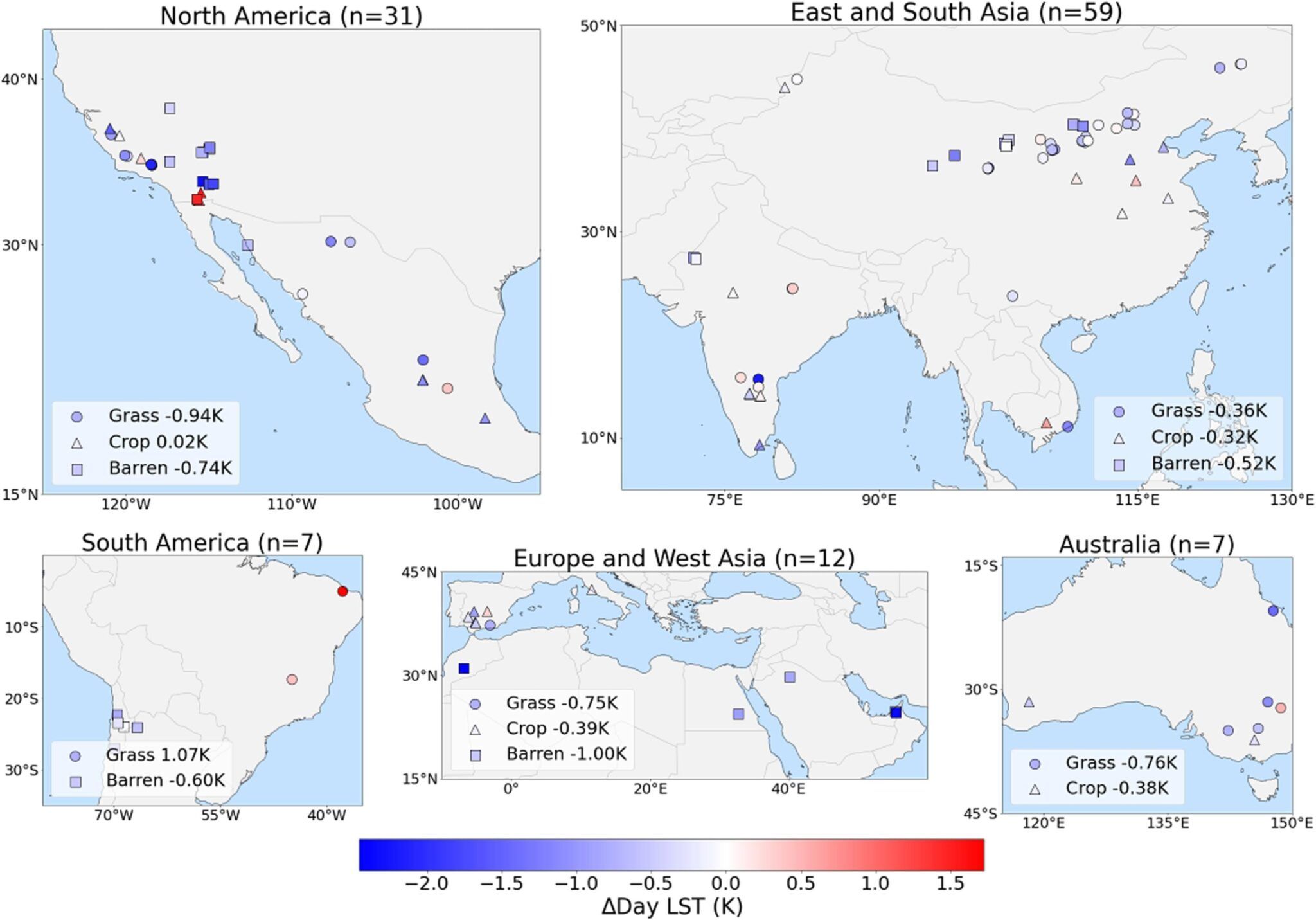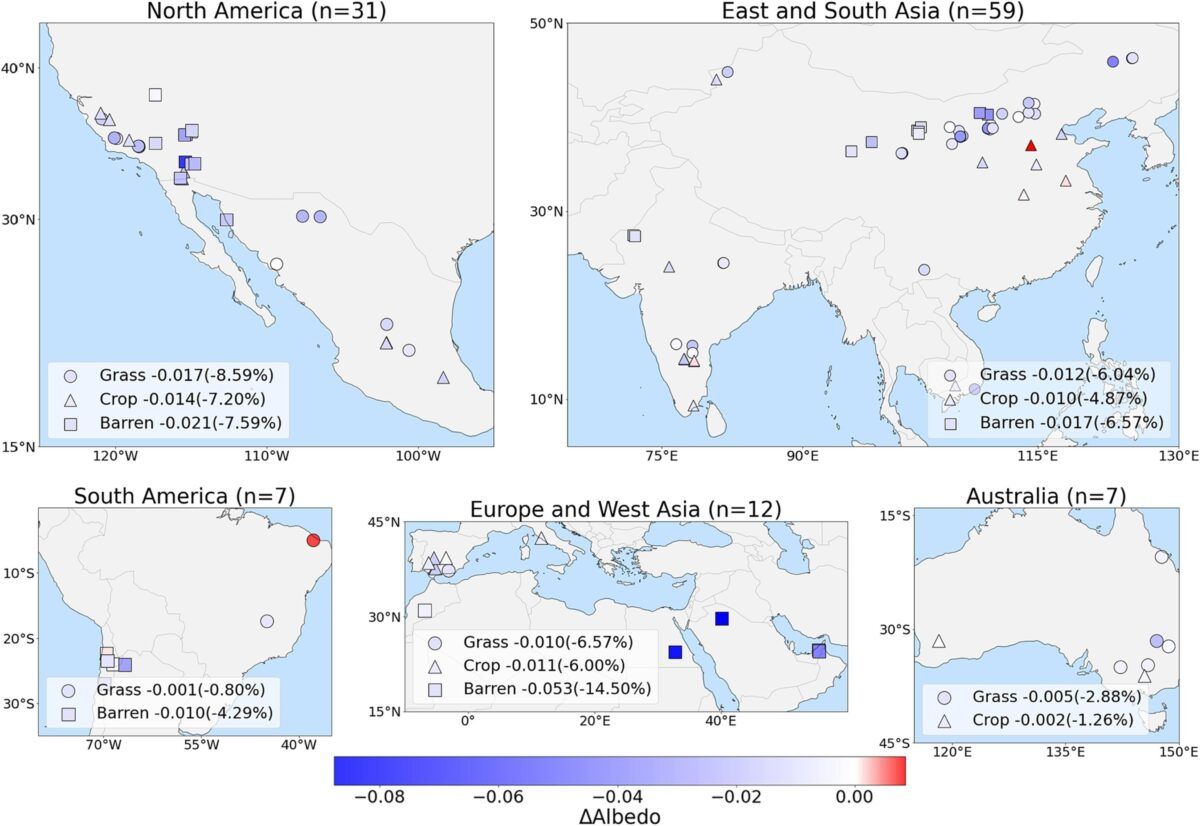
Inquiry
PV plants' impact on albedo, vegetation, and land temperature
Impacts on Annual Mean Daytime LST
Image: Beijing Normal University, Solar Energy, CC BY 4.0 DEED
In a joint effort, Chinese and American researchers used remote sensing to measure the impact of solar farms (SFs) on key environmental factors. They utilized data from the MODIS instrument aboard NASA's Terra and Aqua satellites to assess 116 solar farms globally.
The team highlighted the advantages of satellite data, particularly its high spatial resolution and extensive global coverage, which are essential for detecting surface changes at detailed levels. The MODIS observations, known for their comprehensive temporal coverage and moderate spatial resolutions, were pivotal in this research.
The study included both photovoltaic (PV) and concentrating solar power (CSP) sites, each occupying at least 400 hectares. Additionally, the researchers evaluated surrounding non-SF buffer areas, formed as 1 km wide rings around the SFs and distanced 1 km from their boundaries.
Three specific MODIS measurements were examined: land surface temperature (LST), albedo, vegetation, and the enhanced vegetation index (EVI). These parameters were observed over five years, starting two years before construction and continuing for two years after.
To account for natural climate variations, changes in the buffer areas were subtracted from those observed at the SF sites.
The findings revealed a notable global decrease in albedo, averaging -0.016 for most of the SFs studied. Regionally, solar farms in North America showed a larger drop in albedo (ranging from -0.014 to -0.021) compared to those in East and South Asia, where the decrease ranged from -0.010 to -0.017.
Impacts on annual mean albedo
Image: Beijing Normal University, Solar Energy, CC BY 4.0 DEED
The study found that vegetation, as indicated by the Enhanced Vegetation Index (EVI), generally declined by 0.015, a notable 8.2% decrease. This trend varied regionally, with all North American sites showing a 0.023 drop in EVI, whereas about a third of the sites in East and South Asia experienced an increase.
In terms of land surface temperature (LST), the researchers observed an average daytime cooling of 0.49 Kelvin (K) and a nighttime reduction of 0.21 K. Out of the 116 sites, 94 showed cooling during the day, while 82 experienced nighttime cooling.
The study also distinguished between the effects of different solar energy technologies. Researchers compared pairs of photovoltaic (PV) and concentrating solar power (CSP) solar farms that were situated on the same type of land and within the same latitudinal range. They found that PV had a more substantial impact than CSP on barren land, except for a greater daytime cooling effect with CSP. Conversely, on cropland, PV had less impact on albedo and daytime LST than CSP, but it had a greater effect on EVI and nighttime LST.
These findings are detailed in the paper titled "A global assessment of the effects of solar farms on albedo, vegetation, and land surface temperature using remote sensing," published in the journal Solar Energy. The research was conducted by academics from Beijing Normal University the Southern University of Science and Technology in China, and the California Institute of Technology in the United States.
For more relevant information, subscribe to ACE Battery.
Our expert will reach you out if you have any questions!


